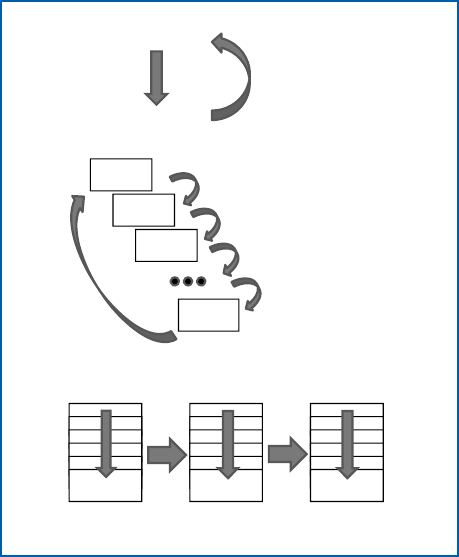Operating instructions

12 Choosing a Ham Radio
Scanning
Radios on the market today can rapidly switch
from frequency to frequency to look for signals. This
is called scanning. It allows the operator to monitor
many different frequencies without having to manu-
ally tune to each one.
There are three types of scanning. Basic scanning
consists of the receiver starting from the scan start
frequency and tuning continuously to the scan stop
frequency. If a signal is detected, scanning is stopped
or paused for the operator to listen in. This is most
useful in the weak-signal or satellite segments of the
VHF and UHF bands and when listening for simplex
FM signals.
Channel scanning is jumping from channel to
channel in sequence. Again, scanning stops or pauses
when a signal is detected. Channel scanning requires
a start channel and a stop channel. Channels may be
designated to be skipped, as well. This type of scan-
ning is the most useful for watching many repeater or
simplex channels.
Groups of channels may be organized in banks.
Bank scanning scans all the channels in a bank before
moving to the next bank. Not all radios organize their
memory channels as banks. Banks are useful for
grouping channels together by function; police, fire,
aircraft, ham, etc.
Programmed scan is the most flexible of all and al-
lows the user to set up lists of channels to be scanned. This is most conveniently done with
a PC instead of the radio keypad. Channels can generally be scanned in any order. The PC
software often allows the operator to set up “profiles” of programmed scans (for example,
parade communication or ARES drills in which different sets of channels are in use) so
that the radio can be configured quickly and efficiently.
Scanning is much more convenient to use if you have control over scan delay and scan
resume. Scan delay is the time the radio spends listening to each channel before moving to
the next one. A longer delay catches more activity and lets you listen longer to each chan-
nel, but slows down the overall scanning process. Scan resume tells the radio to how long
to pause or to stop if a signal is detected. Some radios offer voice detection to distinguish
between a voice signal and a steady tone or noise that may result from interference.
Antennas
Antenna choice is the single biggest factor in determining whether you’ll be able to
communicate effectively with any type of radio. Handheld radios come with a stubby, flex-
ible antenna (“rubber duck”) that attaches directly to the radio for convenience. These are
fairly sturdy, but are not very efficient. Consider purchasing a more efficient mobile whip
antenna with the necessary connector or adaptor for your radio. At home you can attach a
mobile antenna to a metal surface or structure. Longer, more efficient antennas to replace
the rubber duck are also available. For repeater and FM voice communication, the antenna
should be oriented vertically (“vertically polarized”) to match the signals from repeaters
and other hams.
Mobile antennas are mounted on the outside of a car. Temporary mounts using magnets
Figure7
Frequency1
Frequency2
CH 1
CH 2
CH 3
CH x
CHAN
CHAN
CHAN
CHAN
CHAN
CHAN
CHAN
CHAN
CHAN
CHAN
CHAN
CHAN
CHAN
CHAN
CHAN
CHAN
CHAN
CHAN
Bank 1 Bank 2 Bank 3
Basic
Scan
Channel
Scan
BankScan
Figure7—Radiosonthemarkettodaycanrapidly
switchfromfrequencytofrequencytolookforsig-
nals.Thisiscalledscanning.Thisallowstheoperator
tomonitormanydifferentfrequencieswithouthaving
tomanuallytunetoeachone.Therearethreetypes
ofscanning(seetext).










